Fast-Tunable Terahertz Metamaterial Absorber Based on Polymer Network Liquid Crystal
Abstract
1. Introduction
2. Structure Design and Absorption Mechanisms
3. Experimental Results and Comparative Analysis
4. Conclusions
Author Contributions
Funding
Conflicts of Interest
References
- Chen, H.T.; Padilla, W.J.; Zide, J.M.; Gossard, A.C.; Taylor, A.J.; Averitt, R.D. Active terahertz metamaterial devices. Nature 2006, 444, 597–600. [Google Scholar] [CrossRef] [PubMed]
- Akyildiz, I.F.; Han, C.; Nie, S. Combating the Distance Problem in the Millimeter Wave and Terahertz Frequency Bands. IEEE Commun. Mag. 2018, 56, 102–108. [Google Scholar] [CrossRef]
- Nasr, M.; Richard, J.T.; Skirlo, S.A.; Heimbeck, M.S.; Joannopoulos, J.D.; Soljacic, M.; Everitt, H.O.; Domash, L. Narrowband Metamaterial Absorber for Terahertz Secure Labeling. J. Infrared Millim. Terahertz Waves 2017, 38, 1120–1129. [Google Scholar] [CrossRef]
- Yahiaoui, R.; Guillet, J.P.; de Miollis, F.; Mounaix, P. Ultra-flexible multiband terahertz metamaterial absorber for conformal geometry applications. Opt. Lett. 2013, 38, 4988–4990. [Google Scholar] [CrossRef]
- Khatib, M.; Perenzoni, M. A Low-Noise Direct Incremental A/D Converter for FET-Based THz Imaging Detectors. Sensors 2018, 18, 1867. [Google Scholar] [CrossRef] [PubMed]
- Deng, G.; Xia, T.; Jing, S.; Yang, J.; Lu, H.; Yin, Z. A Tunable Metamaterial Absorber Based on Liquid Crystal Intended for F Frequency Band. IEEE Antennas Wirel. Propag. Lett. 2017, 16, 2062–2065. [Google Scholar] [CrossRef]
- Gnawali, R.; Banerjee, P.P.; Haus, J.W.; Reshetnyak, V.; Evans, D.R. Optical propagation through anisotropic metamaterials: Application to metallo-dielectric stacks. Opt. Commun. 2018, 425, 71–79. [Google Scholar] [CrossRef]
- Bakir, M.; Karaaslan, M.; Akgol, O.; Altintas, O.; Unal, E.; Sabah, C. Sensory applications of resonator based metamaterial absorber. Optik 2018, 168, 741–746. [Google Scholar] [CrossRef]
- Landy, N.I.; Sajuyigbe, S.J.; Mock, J.; Smith, D.R.; Padilla, W.J. Perfect metamaterial absorber. Phys. Rev. Lett. 2008, 100, 207402. [Google Scholar] [CrossRef] [PubMed]
- Zhu, J.; Ma, Z.; Sun, W.; Ding, F.; He, Q.; Zhou, L.; Ma, Y. Ultra-broadband terahertz metamaterial absorber. Appl. Phys. Lett. 2014, 105, 021102. [Google Scholar] [CrossRef]
- Shen, X.; Yang, Y.; Zang, Y.; Gu, J.; Han, J.; Zhang, W.; Cui, T. Triple-band terahertz metamaterial absorber: Design, experiment, and physical interpretation. Appl. Phys. Lett. 2012, 101, 154102. [Google Scholar] [CrossRef]
- Andryieuski, A.; Lavrinenko, A.V. Graphene metamaterials based tunable terahertz absorber: Effective surface conductivity approach. Opt. Express 2013, 21, 9144–9155. [Google Scholar] [CrossRef] [PubMed]
- Zhang, C.; Hu, X. Three-Dimensional Single-Port Labyrinthine Acoustic Metamaterial: Perfect Absorption with Large Bandwidth and Tunability. Phys. Rev. Appl. 2016, 6, 064025. [Google Scholar] [CrossRef]
- Shrekenhamer, D.; Chen, W.C.; Padilla, W.J. Liquid crystal tunable metamaterial absorber. Phys. Rev. Lett. 2013, 110, 177403. [Google Scholar] [CrossRef] [PubMed]
- Wang, R.; Li, L.; Liu, J.; Yan, F.; Tian, F.; Tian, H.; Zhang, J.; Sun, W. Triple-band tunable perfect terahertz metamaterial absorber with liquid crystal. Opt. Express 2017, 25, 32280–32289. [Google Scholar] [CrossRef]
- Deng, G.; Lu, Y.; Yin, Z.; Lai, W.; Lu, H.; Yang, J.; Yang, A.; Ye, Y.; Liu, D.; Chi, B. A Tunable Polarization-Dependent Terahertz Metamaterial Absorber Based on Liquid Crystal. Electronics 2018, 7, 27. [Google Scholar] [CrossRef]
- Altmann, K.; Reuter, M.; Garbat, K.; Koch, M.; Dabrowski, R.; Dierking, I. Polymer stabilized liquid crystal phase shifter for terahertz waves. Opt. Express 2013, 21, 12395–12400. [Google Scholar] [CrossRef]
- Sun, J.; Wu, S.T. Recent advances in polymer network liquid crystal spatial light modulators. J. Polym. Sci. Part B Polym. Phys. 2014, 52, 183–192. [Google Scholar] [CrossRef]
- White, T.J.; Broer, D.J. Programmable and adaptive mechanics with liquid crystal polymer networks and elastomers. Nat. Mater. 2015, 14, 1087–1098. [Google Scholar] [CrossRef]
- Fan, Y.H.; Lin, Y.H.; Ren, H.; Gauza, S.; Wu, S.T. Fast-response and scattering-free polymer network liquid crystals for infrared light modulators. Appl. Phys. Lett. 2004, 84, 1233–1235. [Google Scholar] [CrossRef]
- Bi, S.; Peng, H.; Long, S.; Ni, M.; Liao, Y.; Yang, Y.; Xue, Z.; Xie, X. High modulus and low-voltage driving nematic liquid-crystalline physical gels for light-scattering displays. Soft Matter 2013, 9, 7718–7725. [Google Scholar] [CrossRef]
- Nam, S.; Lee, B.; Kwak, C.; Lee, J. A New Class of K-Band High-Q Frequency-Tunable Circular Cavity Filter. IEEE Trans. Microw. Theory Tech. 2018, 66, 1228–1237. [Google Scholar] [CrossRef]
- Chen, K.M.; Gauza, S.; Xianyu, H.; Wu, S.T. Submillisecond Gray-Level Response Time of a Polymer-Stabilized Blue-Phase Liquid Crystal. J. Disp. Technol. 2010, 6, 49–51. [Google Scholar] [CrossRef]
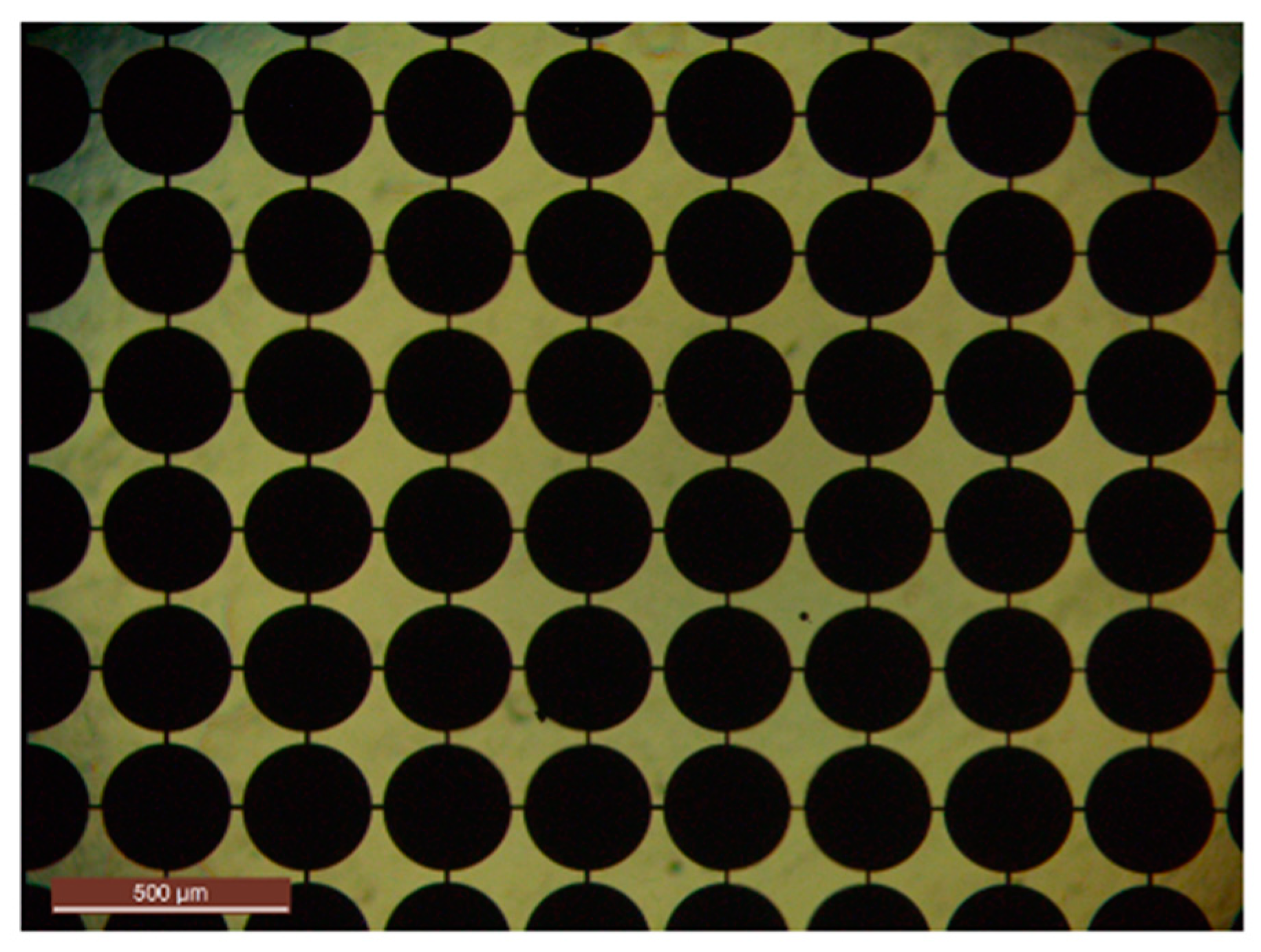
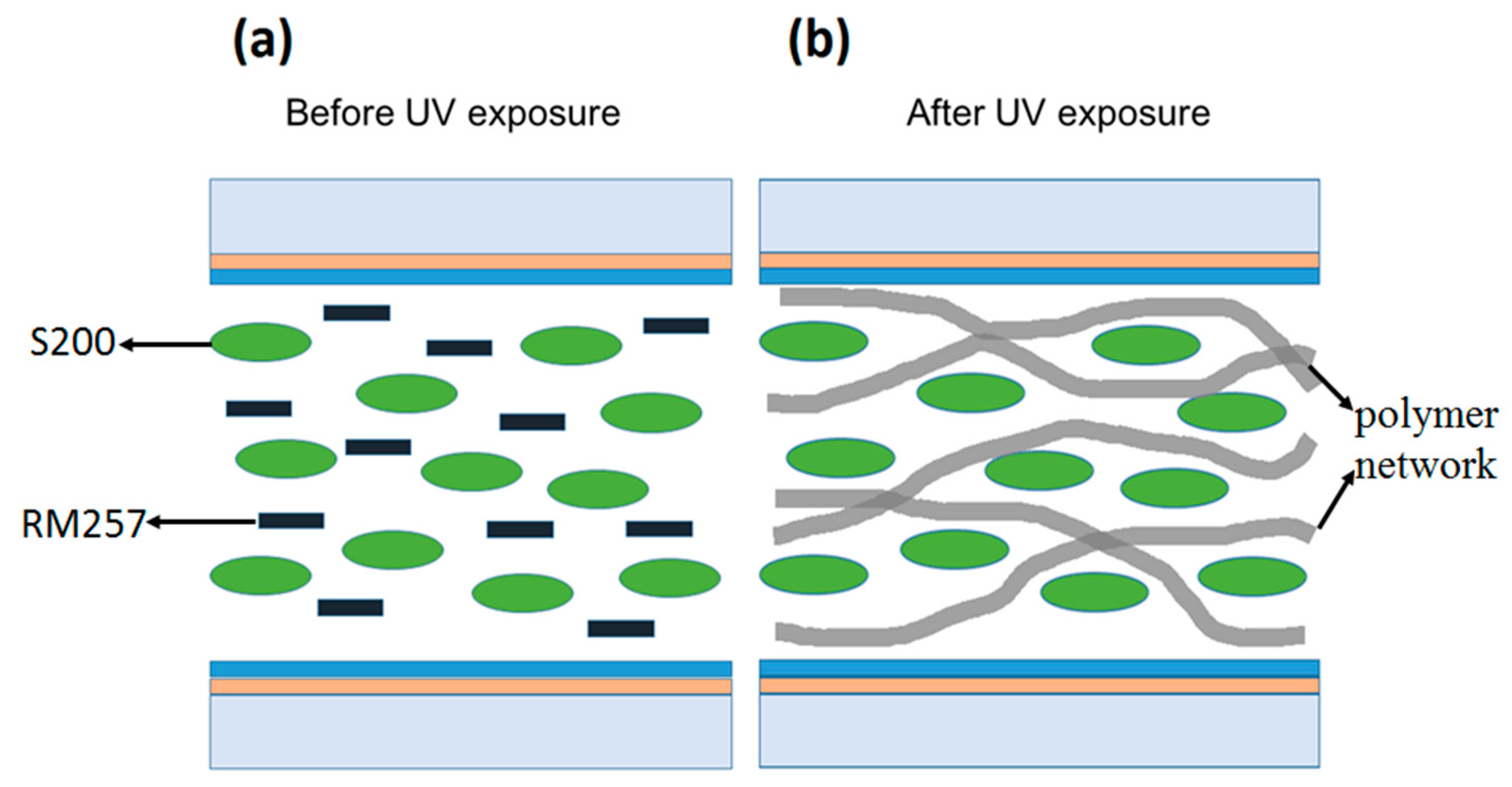
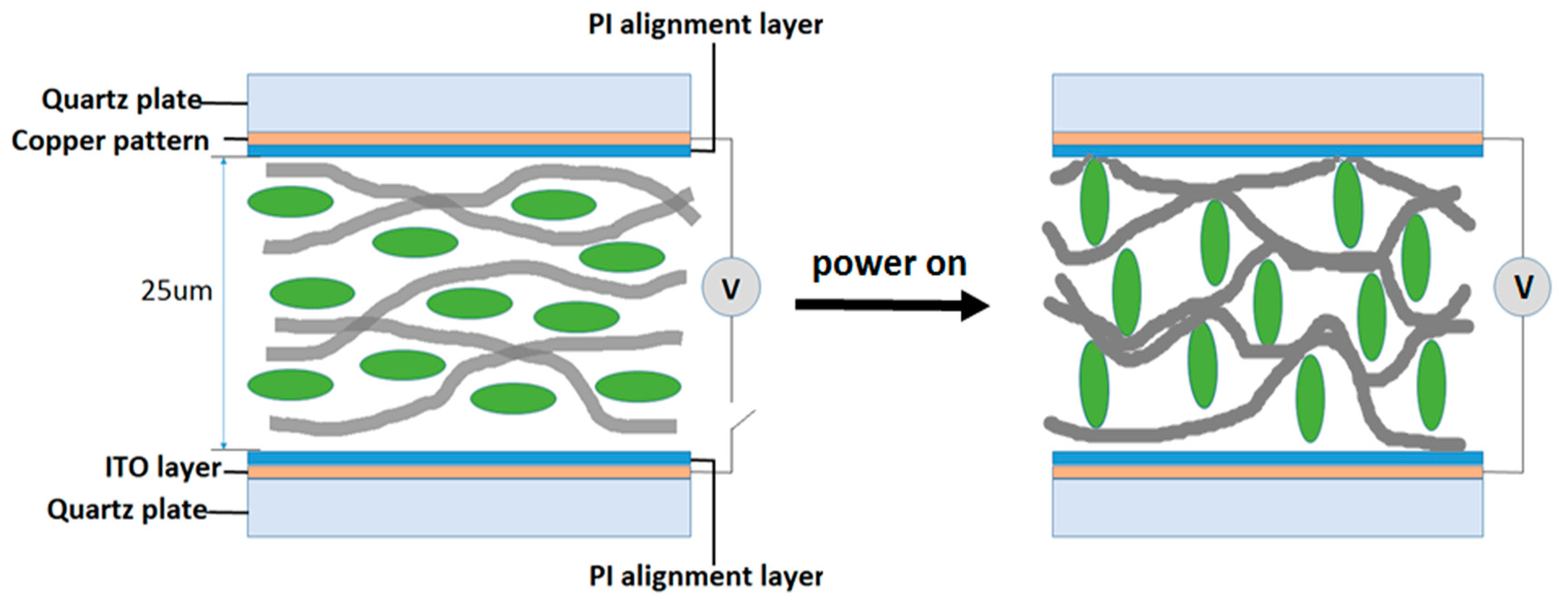
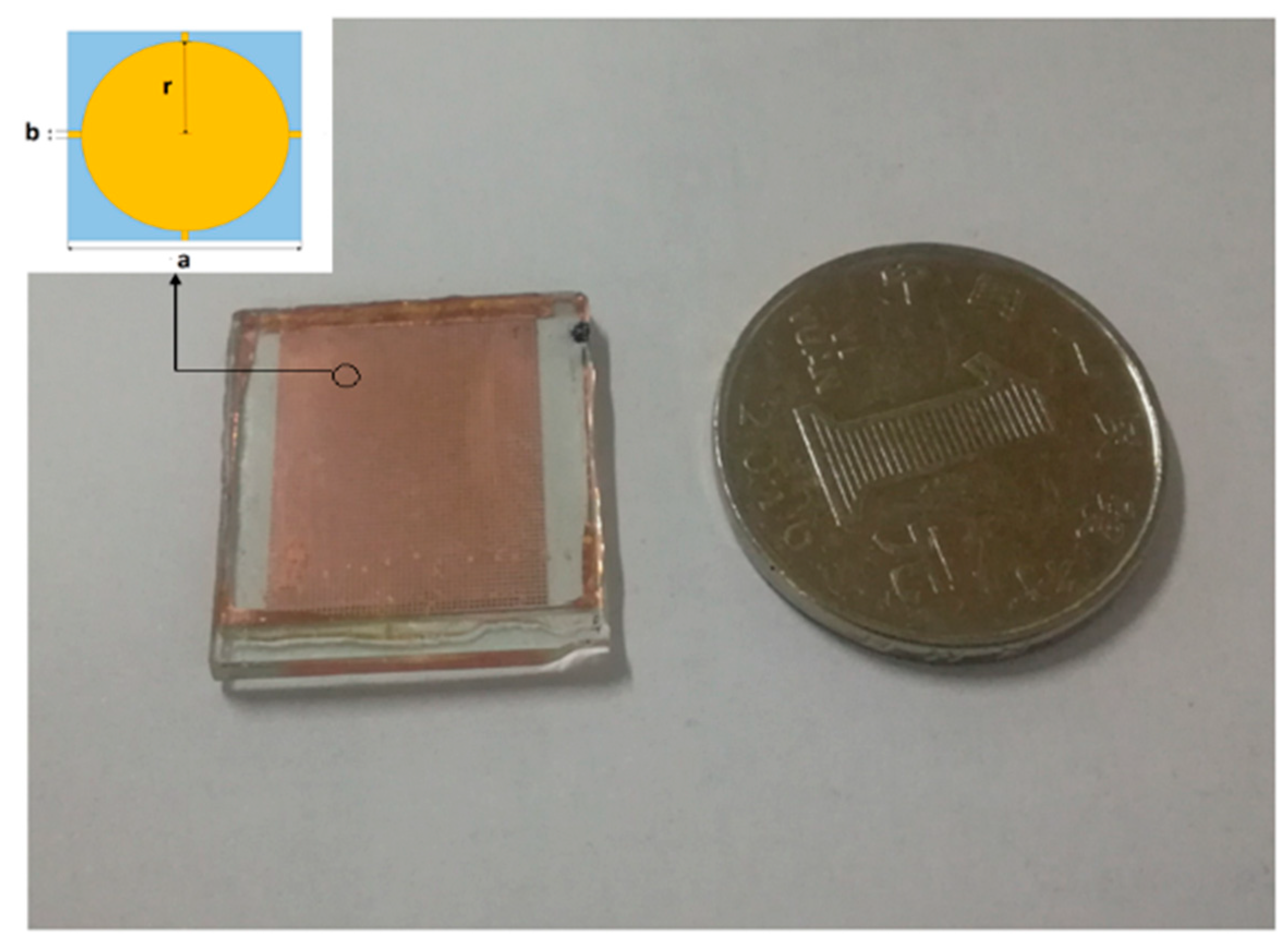
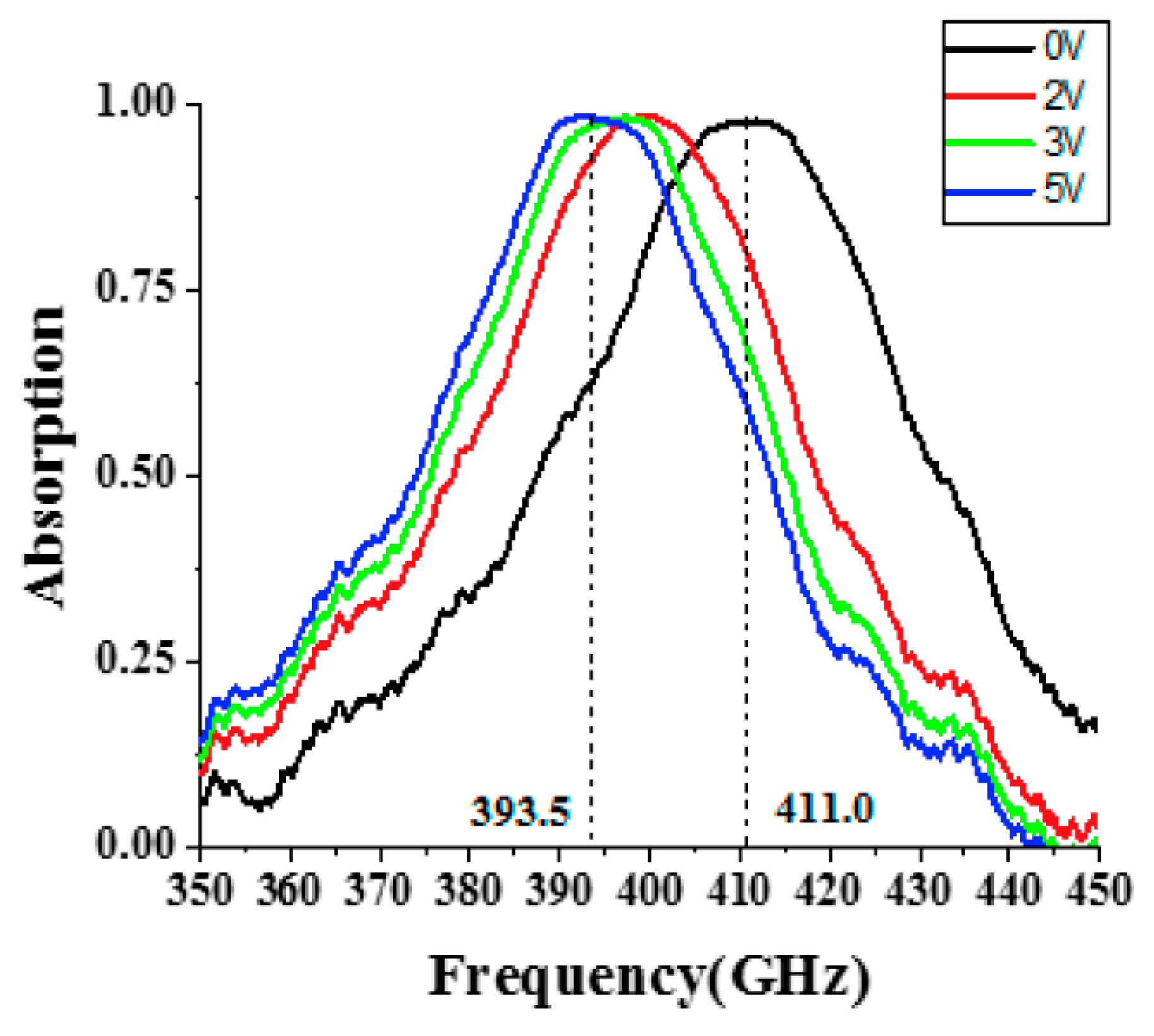
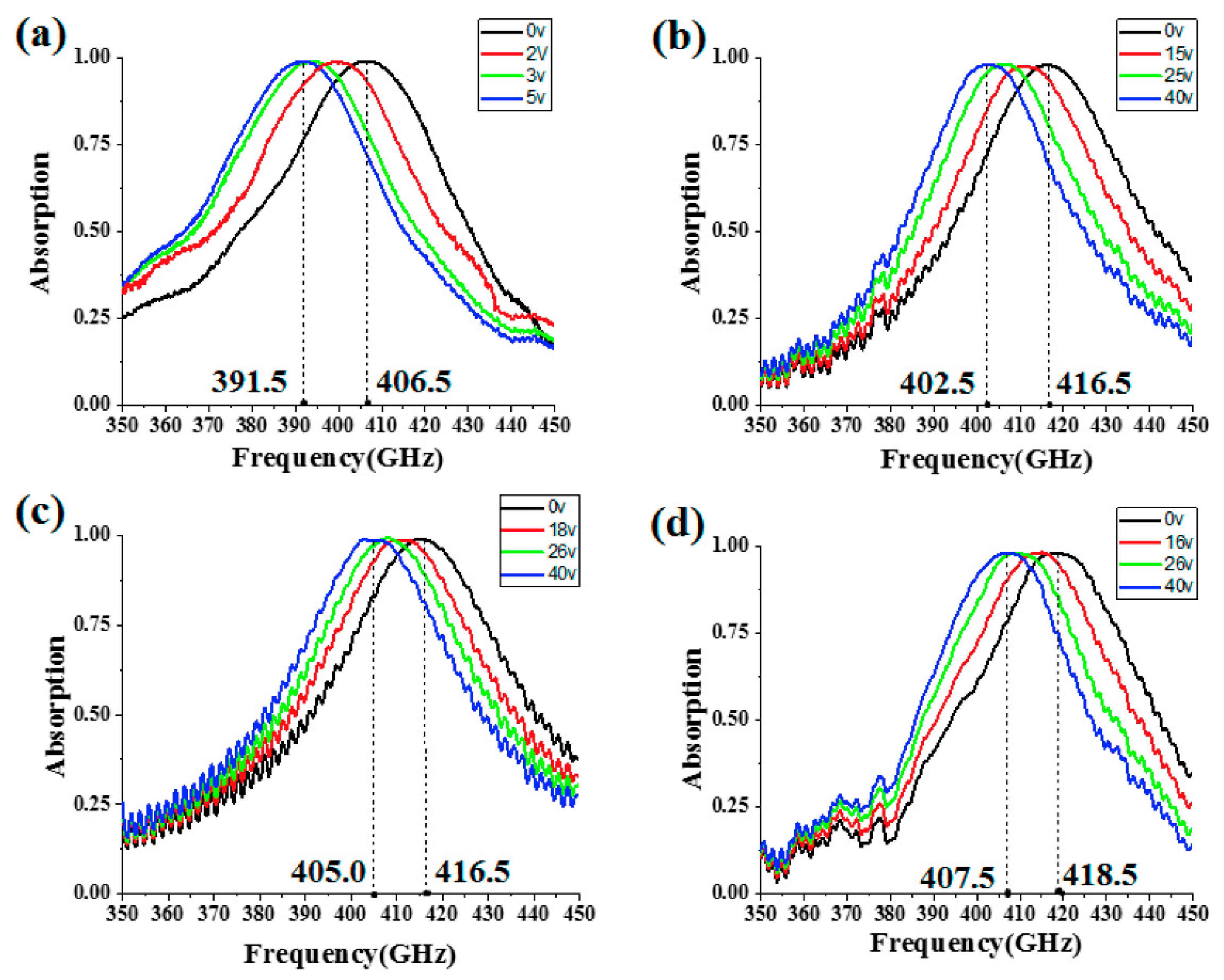
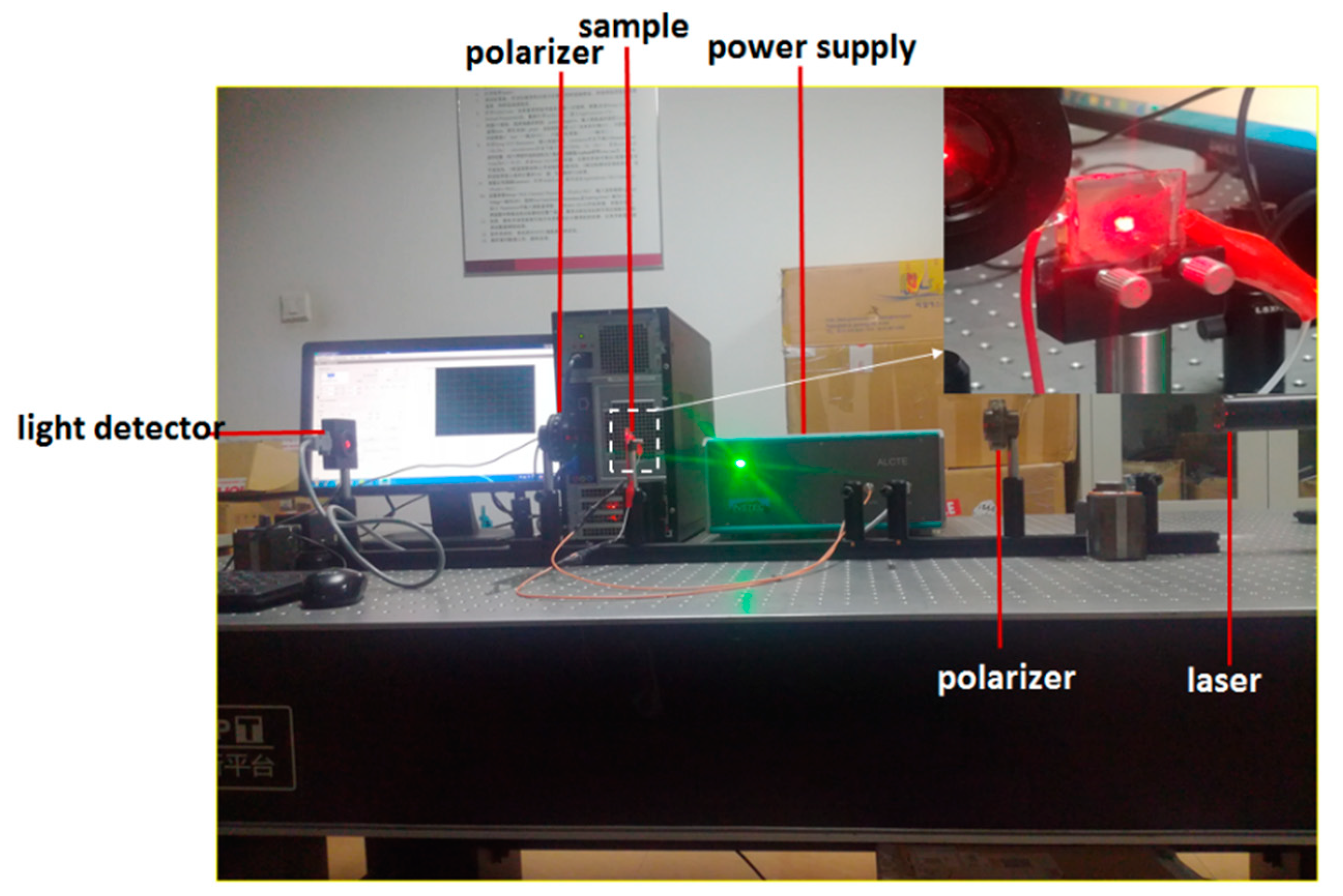
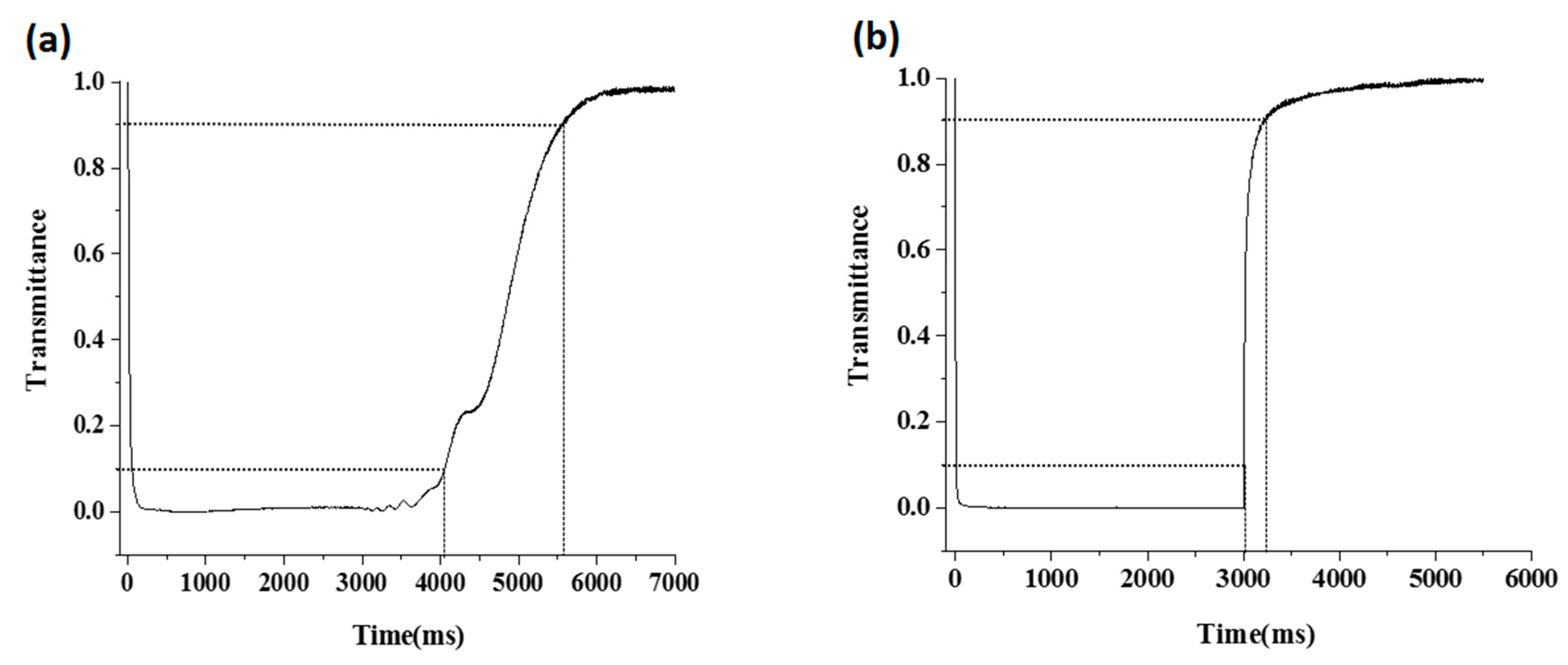
| MAs | Adjustment Time (ms) | Recovery Time (ms) |
|---|---|---|
| nematic LC (S200) | 47.5 | 1466.0 |
| PNLC (0 min) | 51.5 | 2346.0 |
| PNLC (30 min) | 7.5 | 207.0 |
| PNLC (60 min) | 10.0 | 85.0 |
| PNLC (90 min) | 8.0 | 84.0 |
© 2018 by the authors. Licensee MDPI, Basel, Switzerland. This article is an open access article distributed under the terms and conditions of the Creative Commons Attribution (CC BY) license (http://creativecommons.org/licenses/by/4.0/).
Share and Cite
Yin, Z.; Wan, C.; Deng, G.; Zheng, A.; Wang, P.; Yang, Y.; Gao, S.; Yang, J.; Cai, F.; Li, Z.; et al. Fast-Tunable Terahertz Metamaterial Absorber Based on Polymer Network Liquid Crystal. Appl. Sci. 2018, 8, 2454. https://doi.org/10.3390/app8122454
Yin Z, Wan C, Deng G, Zheng A, Wang P, Yang Y, Gao S, Yang J, Cai F, Li Z, et al. Fast-Tunable Terahertz Metamaterial Absorber Based on Polymer Network Liquid Crystal. Applied Sciences. 2018; 8(12):2454. https://doi.org/10.3390/app8122454
Chicago/Turabian StyleYin, Zhiping, Chaofan Wan, Guangsheng Deng, Andong Zheng, Peng Wang, Yang Yang, Sheng Gao, Jun Yang, Fei Cai, Zelun Li, and et al. 2018. "Fast-Tunable Terahertz Metamaterial Absorber Based on Polymer Network Liquid Crystal" Applied Sciences 8, no. 12: 2454. https://doi.org/10.3390/app8122454
APA StyleYin, Z., Wan, C., Deng, G., Zheng, A., Wang, P., Yang, Y., Gao, S., Yang, J., Cai, F., Li, Z., & Lu, H. (2018). Fast-Tunable Terahertz Metamaterial Absorber Based on Polymer Network Liquid Crystal. Applied Sciences, 8(12), 2454. https://doi.org/10.3390/app8122454





